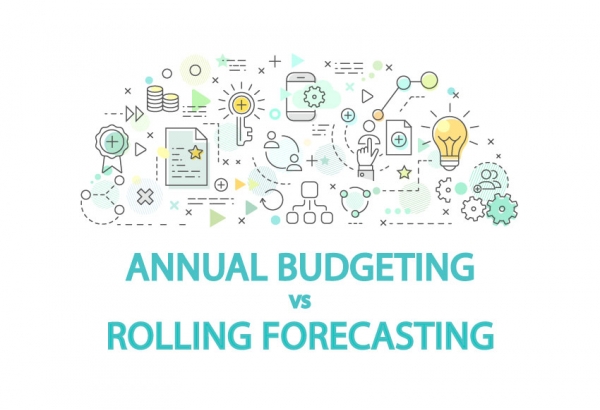Nearly all organizations struggle with budgeting — creating the right reporting mechanisms, getting everyone to input their numbers, and responding to executive input.
Axiom™ Budgeting, part of the Axiom Financial Planning suite, helps by aggregating data from various source systems, streamlining data input and approvals, and creating reports that show only the data relevant to that audience. Independent analysis estimates that Axiom reduces time spent creating budget reports by 75%.1
Here are the 7 practical tactics Axiom users recommend to simplify budgeting.
#1 — Create a Budget Calendar
Create a budget calendar that shows the major tasks that need to be addressed during the process, who’s responsible, and major deadlines. “This way, everyone is on board with when the process starts, when to expect certain things to happen, what deadlines are approaching, and who is responsible for completing each task,” says the Controller of a medium-sized nonprofit health system in the Midwest.
#2 — Keep Reporting Simple for New Users
“We try not to overwhelm our end users with a plethora of reports,” says Tracey Fleming, Manager of Financial Services, Hazelden Betty Ford Foundation. The organization has completed two budgets using Axiom and made a strategic choice to limit user visibility into reporting by configuring the end-user task pane. “We want to get users comfortable with a smaller set of basic reports, and then provide more offerings as our leaders’ comfort levels increase.”
#3 — Set Realistic Deadlines
Axiom clients can budget in a three-month window, which may be an ambitious timeline for some organizations considering 50% of healthcare finance leaders say their budget cycles last six months or longer.2
Here’s a sample three-month schedule for the Midwestern hospital system, with user training and behind-the-scenes work by finance preceding the start of the budget cycle:
- Month 1: Finance opens workbooks for three weeks for users in nonclinical areas, with clinical users receiving an extra week
- Month 2: Budget analysis and preparations for board meetings
- Month 3: Senior leaders approve the budget.
The Controller says this approach makes the best use of everyone’s time.
#4 — Give Experienced Users Deeper Insights
Use the variables functionality in Axiom to pull reports for individual departments on total revenue, operating income, expenses, salaries, supplies, and more on both a monthly and year-to-date basis. “It’s a very compact report that pivots around the date for those various categories in the operating statement,” says the Controller of the Midwestern health system. “It gives leaders a nice place to go and a succinct way of pulling that type of data.”
#5 — Keep Your Budgeting Solution Updated
The Hazelden Betty Ford Foundation works closely with its tech services team to stay on the current version of Axiom, scheduling updates shortly after the release date. “We let tech services know in advance when those releases are scheduled, just in case the latest release requires tech services’ time and support,” says Fleming. This ensures they have access to the latest features, enhancements, and dashboards.
#6 — Develop a Timely Monthly Variance Analysis Process
Use the Axiom tabs process to organize your budget, budget reports, and monthly reports so users can easily access variance information, the Controller says. Users can pull the reports on demand and use the variable reporting structure to see information based on different areas such as cardiology, imaging services, and more. They can also pull the reports for each cost center.
#7 — Strive for Continual Improvement
Unless written down when they occur, insights and a-ha moments tend to be forgotten between budget cycles. “We create a list of things to keep in mind for the next budget season,” Fleming says. “Budgeting is a continual process, and we as an organization want to get better each year.”
Axiom Budgeting, part of the Axiom Financial Planning suite, helps hospitals, health systems, and physician practices connect operational, financial, and capital planning. Our solutions utilize best-practice approaches to streamline planning processes so organizations can accurately plan for the future.
1 Healthcare Performance Management ROI. Syntellis Performance Solutions, 2020.
2 2020 Healthcare Financial Outlook: Performance Management Trends and Priorities. Syntellis Performance Solutions, 2020.
Other resources to help make budgeting easier:

How Annual Budgets and Rolling Forecasting Work Together

5 Approaches to Effective Budgeting and Forecasting in Healthcare


